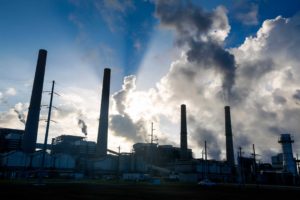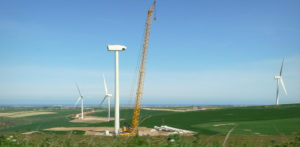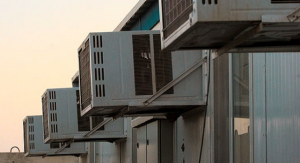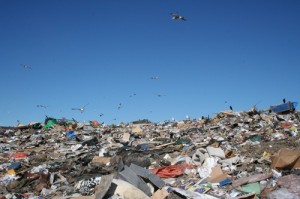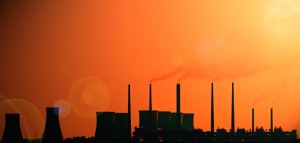23 item(s) were returned.
U.S. Senator, State of Wyoming
Chairman, Senate Committee on Environment and Public Works
Congress needs to help make American energy as clean as we can, as fast as we can, without raising costs on consumers. That’s why I, along with a bipartisan group of Senators, introduced the Utilizing Significant Emissions with Innovative Technologies Act, or simply, the USE IT Act. We held a Senate hearing on this bill several weeks ago. The USE IT Act would encourage the commercial use of man-made carbon dioxide emissions and support the use of carbon capture technology, including direct air capture. The legislation also expedites permitting for carbon dioxide pipelines in order to move the carbon dioxide… [more]
View InsightPresident
Business Council for Sustainable Energy
From coast to coast, America’s economy kicked into high gear in 2018—and the clean energy sector had a record year, too. The Business Council for Sustainable Energy’s recently released 2019 Sustainable Energy in America Factbook documents strong trends in clean energy and a need for continued federal policy support that leverages private sector investment to accelerate emissions reductions. For years, the rapid growth we have seen in energy efficiency, natural gas, and renewable energy drove down U.S. greenhouse gas emissions (now 10% below 2005 levels) while the economy grew. That’s why it was frustrating to see energy productivity (the ratio… [more]
View InsightSenior Fellow
Niskanen Center
Conservative and progressive policy wonks agree: a carbon tax is the most promising of all tools to fight climate change. Such a tax would spur investments in green energy and encourage motorists to buy more electric cars. It would minimize the role of regulatory bureaucrats and maximize that of markets. What is not to love about a carbon tax? The sticking point is what to do with the billions of dollars of revenues such a tax would generate. Conservatives favor using the money for a revenue-neutral tax swap. Lower taxes on capital would encourage investment, lower payroll taxes would encourage… [more]
View InsightProfessor of Public Policy
Georgia Institute of Technology
City skylines have long been a symbol of innovation and prosperity. What you can’t see is that these same buildings are some of the largest energy consumers in the United States and are therefore responsible for significant amounts of the nation’s carbon pollution. In August 2015, President Obama and the U.S. Environmental Protection Agency released the final Clean Power Plan, regulating carbon pollution from existing power plants for the first time. Since then, many cities have released Climate Action Plans, setting targets for carbon emissions. The success of these two initiatives are mutually dependent. EPA’s Clean Power Plan requires strong… [more]
View InsightPresident
Reishus Consulting, LLC
The New York Attorney General has been investigating Exxon Mobil for failing to disclose to its investors its climate risk, or the risk that climate change may have on the value of the company’s assets, including its extensive oil reserves, which some claim must remain in the ground if necessary future reductions in carbon emissions are to be achieved. As the controversy around Exxon Mobil’s carbon-related financial reporting continues, other entities are moving forward to address so-called climate change or “carbon asset” risk. In fact, the institutional investment fund CalPERS now requires that companies it chooses to invest in have… [more]
View InsightDirector
Rutgers EcoComplex: New Jersey Agricultural Experiment Station
Industry production systems underlying the Food, Energy, and Water (FEW) Nexus have traditionally treated pollution and waste as externalities that often end up in a landfill. Food waste is the single largest component of municipal solid waste reaching landfills today and is often the byproduct of many FEW Nexus inefficiencies. Inefficiencies that can be addressed through technologies such as anaerobic digesters. In the U.S., food harvesting, processing, and transportation accounts for 10 percent of our energy. However, 40 percent of food goes uneaten and Americans are not only wasting the equivalent of $165 billion each year on this organic compound,… [more]
View InsightThere are over 90,000 cargo ships powered by oil-based fuels that, according to one study, account for 3-4% of worldwide emissions (including SOx, NOx, PM and CO2). In 2012, the International Maritime Organization sparked a series of regulations aimed at reducing sulfur emissions and in January, 2015, a new U.S. rule went into effect that requires ships operating in coastal waters to make further reductions. With an abundance of U.S. natural gas, one potentially cost-effective compliance option is to transition to marine shipping fueled by LNG, however, challenges remain. Supporters of LNG as a fuel source say it will reduce… [more]
View InsightExecutive Director
Environmental and Energy Study Institute
According to the EPA, its proposed Clean Power Plan (CPP) would lead to a 30 percent cut in carbon emissions from the power sector by 2030, compared to 2005 levels. The CPP sets a customized goal for each state, which takes into account its existing policies and the unique structure of its energy system. The current draft regulation gives states interim goals for 2020-29, and a final target for 2030. The EPA proposal offers a great deal of flexibility for states to choose how best to achieve these emissions reduction goals. The CPP suggests four “building blocks” that states can… [more]
View InsightAssistant Professor
American University
On February 10, the National Academy of Sciences (NAS) released two major new reports on climate engineering (or “geoengineering”). The reports set out to summarize the scientific basis for what the authors chose to call “climate intervention,” identify governance and ethical challenges, and chart a new research agenda. While the authors were careful to state that climate intervention is no substitute for reduction in carbon dioxide emissions, the reports indicate support for further investigation into large-scale technological responses. The paired studies assess two specific groups of strategies: (1) carbon dioxide removal and (2) reflecting sunlight, or albedo modification. While the… [more]
View InsightChief Executive Officer
National Coal Council
The existing fleet of coal-fired power plants is critical to the economic prosperity of the U.S. As the leading provider of U.S. electricity generation (at 39%), low cost coal keeps electricity prices below those of other free market nations and provides a competitive edge for U.S industry. In addition, the “Polar Vortex” weather events of January and February 2014 demonstrated the contribution of the existing coal fleet to the reliability of the U.S. electricity grid. After limited natural gas resources were diverted from electricity production to residential heating needs, coal-fired power plants made up the difference. Nationwide, over 90% of… [more]
View Insight